BULLHEAD CITY, ARIZONA — Sometimes an old project just needs a new perspective. For the Moss gold-silver mine project in northwestern Arizona, that new perspective arrived two and a half years ago when Northern Vertex Mining (TSXV: NEE) signed on to earn a 70% stake in the project.
There have been bumps on the road, including a resource-estimate error that forced the company into a communications blackout for several months, just when management needed to be talking up the project to raise development capital. In time the error was fixed, the capital was raised and the project got back on track.
Other obstacles have arisen since, including tight markets that have made even the modest price tag at Moss hard to cover. But the challenges will be worth it: gold-rich solution is about to come off the leach pad, marking the beginning of what Northern Vertex hopes will be years of production.
The Moss mine, as the name implies, has been in production before. The golden veins within the low-sulphidation epithermal system at the site drew miners to the area as early as 1863. Over the next three years several operators dug glory holes, sunk shafts and drove tunnels to extract 12,000 oz. gold.
In 1866 the mine closed because of “unfriendly Indians,” according to the project’s latest preliminary economic assessment (PEA). Inhospitable conditions and a low gold price meant the operation stayed idle for the next 50 years. In 1915 Moss started up again as an underground mine, but in 1920 it again went dormant.
In the 1980s modern exploration arrived at Moss when BF Minerals drilled 58 holes into the Moss vein. A few years later Harrison Mining optioned the property and dewatered a shaft to access the Allen vein. Harrison mined 3,000 to 5,000 tonnes of ore carrying an average grade of almost 9 grams gold per tonne, but then shut down.
The pattern continued in the 1990s, a decade that saw four operators take runs at the project, each probing the Moss vein with holes but failing to advance to production. Then in 2004 Patriot Gold acquired the claims and over the next five years drilled 43 more holes.
“Lots of companies have owned the site because of those grades, but it wasn’t until Northern Vertex came in and looked at it as a stockwork system with bulk-mineable potential that it became economic,” said Joe Bardswich, general manager of the Moss project.
Northern Vertex arrived at Moss in late 2009. By 2011 the company was ready to drill, and over the next two years, the company completed 73 reverse-circulation holes, 59 core holes and 323 percussion holes, for a total of 455 holes and 22,771 metres of drilling. It adds up to a lot of drilling — the Moss vein has been perforated with more than 670 holes.
Northern Vertex’s holes, however, had a different goal: exploring the lower-grade stockwork mineralization emanating out from the high-grade veins. After tracking the Moss vein for 1.3 km, the company defined a sizable resource, which remains open on strike and at depth.
Using a 0.3-gram gold cut-off grade, the deposit contains 22.6 million measured and indicated tonnes grading 0.74 gram gold and 8 grams silver, plus 3.9 million inferred tonnes averaging 0.52 gram gold and 6.3 grams silver. Together, the resource categories host 603,000 oz. gold and 6.6 million oz. silver, and 97% of the resource lies within 200 metres of surface.
Some of those ounces will soon be mined, leached, purified and poured. Combining caution and efficiency, Northern Vertex designed a two-phase development approach for Moss. The first phase is complete and 90,000 tonnes of ore are now sitting on a leach pad, partway through a 100-day leach cycle.
If all goes well with phase one, Northern Vertex will get ready to launch phase two, which would churn out 200,000 oz. gold and 2 million oz. silver in less than four years.
And here’s the crux: these two phases of development bear a combined capital cost of just $34 million. With the investment barrier so low, the project in phase two is expected to generate a whopping 117% internal rate of return. It is such an unusually high number that the B.C. Securities Commission examined the PEA for two months to make sure everything was in order.
The property offers long-term potential too, with historic adits and surficial geology outlining numerous as-yet untested targets. Northern Vertex wants to see a third phase at Moss, and plans to that end are undoubtedly afoot. But first, the project has to prove that it works on a small scale.
Phase One
“There’s a lot riding on the pilot plant,” says Leianne Emery, Northern Vertex’s investor relations manager, as we drive the 130 km from the Las Vegas airport to the Moss project. “There’s no reason to believe it won’t work, but we want to see it in action before we commit to phase two.”
Phase one is a pilot project, a small-scale version of the phase-two operation. By the end of phase one Northern Vertex will have tested out its milling and agglomeration techniques, assessed how Moss ore responds to heap leaching on a large scale, ascertained reliable recovery rates for gold and silver, and gathered data to inform a feasibility study for the expanded operation. Bench-scale tests are one thing, but scaled-up field tests offer more certainty — and in a market tight on cash, Northern Vertex wants to be sure that Moss will work.
The term “Moss vein” has been used so long that it has stuck, even though the structure at Moss is not really a vein. Instead, a gold- and silver-laced porphyry intrusion forms the hangingwall of a fault, which runs east–west and dips south. The intrusion and the fault that runs alongside it are obvious, forming a prominent ridge that dominates the surrounding landscape.
The hangingwall is brecciated and stockworked, especially above major accumulations of quartz and calcite in the vein. Indeed, gold grades at Moss are highest where there is a lot of quartz and calcite, and the deposit as a whole contains very little sulphide.
All of the fracturing associated with the Moss vein allowed groundwater to percolate to great depths, which means the vein is oxidized as deep as 150 metres below surface. This helps because oxidized rocks are softer and easier to mine, though metallurgically there is no difference between oxidized and unoxidized ores.
Both kinds of rock are amenable to leaching, as the gold and silver are associated with calcite and quartz, but are free. The PEA that outlined Northern Vertex’s plans at Moss assumed 75% recoveries for gold and 55% for silver. These are conservative numbers: gold recovery from high- and low-grade ore samples actually averaged better than 83%.
In phase one, infrastructure needs are limited to a basic outdoor-crushing system, a leach pad measuring 200 by 90 metres, a simple carbon-adsorption process circuit to retrieve the gold and silver from the pregnant-leach solution, an assay lab and support buildings.
The zone mined in phase one is 150 metres long. But this phase did not create a pit — the targeted ore was all within a hill, and phase one operations simply removed one side of the hill. The mined-out area is therefore free draining, which simplified permitting. The hill also means that phase one offers a low strip ratio of just 0.79 tonnes of waste for each tonne of ore.
In this first phase the leach pad received 60,000 tonnes of higher-grade material — bearing an average grade of 2.225 gram gold and 19.55 grams silver — as well as 30,000 tonnes o
f lower-grade ore, averaging 0.66 gram gold and 6.08 grams silver.
In planning phase one, Northern Vertex made several decisions that at first seem odd, such as relying on diesel generators for power when there are power lines with extra capacity just a few miles away, or sending its haul trucks along an uneven road between the mine and the process facility. However, in context the decisions were all highly strategic — they simplified the phase-one permitting process.
For example, even though power lines pass within a few kilometres of the mine site, connecting to power lines requires a raft of additional permits. Conversely, powering a 1,000-tonne-per-day operation with diesel generators for 90 days requires limited authorization. A similar line of reasoning explains the haul road: Northern Vertex is using existing roads and can repair them to a certain degree, but alterations that change the grade or fill a dip significantly would require authorization from the Army Corps. of Engineers because old, dry creek beds around the mine site mean the area is classified as navigable waters.
“As a result the haul road is a bit bumpier than we would have liked, but we chose that rather than risk being postponed by permitting,” Bardswich said.
By avoiding these potential complications, Northern Vertex designed a phase-one operation that only needed four permits, all from the state of Arizona. No federal authorizations were required.
Phase two
If all goes well in phase one, Northern Vertex will move on to phase two, which will look more like a regular open-pit mine. For one, the 6.2 million tonnes of rock mined during phase two will create a pit that reaches 1.3 km in length and 175 metres deep. The plan calls for 5,000 tonnes of ore and 8,000 tonnes of waste rock to be mined each day, resulting in a strip ratio of 1.6 to 1.
It will take 3.5 years to mine the phase-two resource. The entire phase will last more like five years, as it will take another 18 months to build the infrastructure needed for the scaled-up operation. This includes a power substation and transformer, a permanent administration and operations building, a mechanic shop, a high-pressure rolls grinder to crush the ore before leaching, expansions to the leach pad and tailings facility, and an entire Merrill-Crowe recovery system, including a furnace to produce doré bars.
Together, phases one and two are expected to churn out 220,000 oz. gold and 2.3 million oz. silver. All of these ounces will come from resources that sit within patented ground, where permitting requirements are much less than on public, federally administered ground.
The global Moss mine resource contains another 317,000 oz. gold and 3.6 million oz. silver, generally located beneath and to the west of the planned pit. These ounces would be available for mining in phase three — but that depends on the success of phase two.
It would also depend on permitting, a process that would be more involved than it was for the first two phases. The big difference is that a third expansion would push the operations beyond patented land and onto federal land, where federal permits would be needed.
“We’ll have about four years of operations on private land before we would expand onto federal land, so if we make that decision we will have time to get those permits,” Bardswich says. “And by then we will have a track record that proves we do what we say we’ll do, so our credibility will be up.”
The third requirement for a third expansion at Moss would be finding more mineralization. Northern Vertex is doing some work on that front already: an airborne geophysical survey completed earlier this year will help hone in on property wide exploration targets to drill test in the future. For now the company’s drills are seeking resources that could expand the phase-two pit.
To that, the company probed west along strike from the pit, tracking the ridge. The results confirm the continuity of mineralization to the west, with drills pulling such intercepts as 106.7 metres grading 0.45 gram gold and 6.5 grams silver from outside of the planned pit. Other good hits include 76.2 metres grading 0.52 gram gold and 6.1 grams silver and 29.6 metres grading 0.84 gram gold and 9.5 grams silver.
The geologists who wrote the Moss mine PEA concluded their report by saying that the Moss mine “represents a project with a great deal of potential for being an important gold producer in western Arizona.”
Northern Vertex tends to agree.
Local communities, partner on-board
Northern Vertex’s compatriots in developing the Moss mine also believe in Moss’ long-term potential. That list includes joint-venture partner Patriot Gold (US-OTC: PGOL), the 100,000 people who live in the nearby cities of Bullhead and Laughlin, and the small group of prospectors and geologists who will profit off each ounce of gold produced at Moss thanks to royalties and other fees.
Bullhead and Laughlin face each other across the Colorado River, which also defines the boundary between Nevada and Arizona. Laughlin is in Nevada, Bullhead City is in Arizona and the combined city lies just 12 km northwest of Moss mine.
“Everyone in the town is excited,” says Mark Clark, vice-mayor of Bullhead City. “The city economic development committee has been doing everything it can to get this operation up and going. Most people in Bullhead work across the river in Laughlin, in lower-wage service jobs, so we are excited to have the Moss mine and the opportunities it represents.”
Unemployment in the area is hovering around 8–9%, so Northern Vertex has been inundated with job applicants. If Moss enters phase-two operations, its 200 employees would position the mine as the third-largest employer in the Bullhead–Laughlin area, after the area’s two hospitals.
Patriot Gold is also excited to see the Moss mine reactivated. Patriot still owns 100% of the project because Northern Vertex has not met the requirements of its 70% earn-in, though it is close. With phase one underway the company is finalizing the phase-two feasibility study, which it aims to deliver before year-end.
Once the study is complete, the company will have completed the earn-in requirements and own 70% of the Moss mine project. Patriot Gold will retain its 30% stake, as long as it can cover its part of expenditures. If it cannot pay for 30% of the costs to build phase two its stake will get diluted down. If its stake falls below 10% it converts to a royalty.
The project is also subject to a fee and a royalty. The fee is payable to the three prospectors who brought Moss mine before Northern Vertex, who will earn up to US$15 for each ounce of gold and US35¢ for each ounce of silver produced at Moss (the exact fees vary with metal prices). Payments are capped at US$21 million and Northern Vertex can buy the obligation for US$2.4 million, within 90 days of the start of commercial production.
As for the royalty, it stems from a 2004 deal between Patriot and MinQuest, a geologic consulting firm, and comes in three forms. Moss will have to pay out a 3% net smelter return royalty (NSR) on production from unpatented claims listed in the Patriot–MinQuest deal and on public lands within 1 mile of the claim boundary, a 1% NSR on patented claims not subject to any other royalties and a 0.5% NSR on patented claims with other royalty interests.
Northern Vertex shares have ranged between 55¢ and 70¢ in recent months, down from $1.45 a year ago. The company has 57.8 million shares out
standing and recently closed a $3.4-million financing, selling 5.2 million units at 65¢ apiece. Each unit comprised a share and half a warrant exercisable at 90¢ for 18 months.

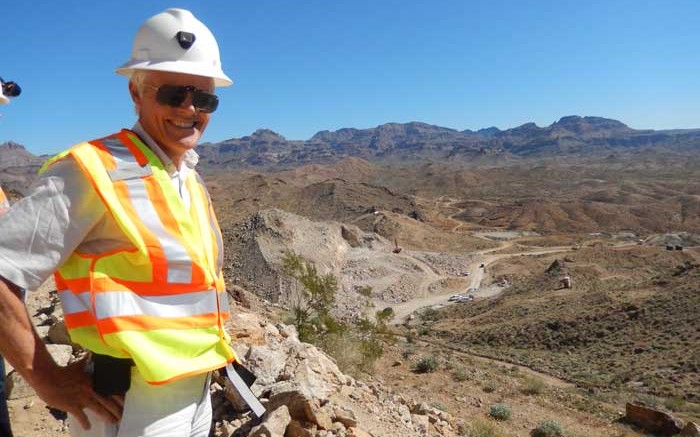
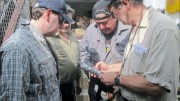
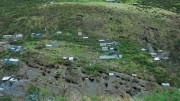
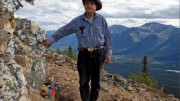
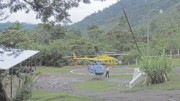
Be the first to comment on "Northern Vertex mines Moss"